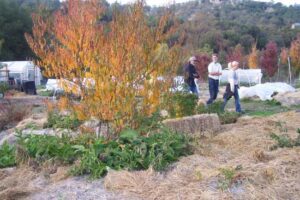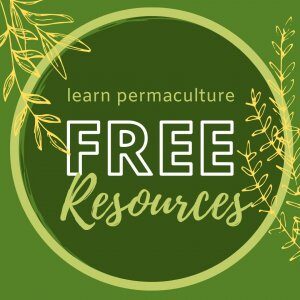
Our dependence on technology and our separation from the natural world becomes more apparent every day. Therefore taking time to unplug and practice forest bathing has never been more important. But what is Forest Bathing? Here’s a hint – it’s not taking a hike into the woods and plopping yourself into a bubbly bathtub.
Forest bathing, or Shinrin-Yoku, is about bathing the senses in the natural world. Since we receive healing energy, or prana, through our senses, it is no wonder that people feel great after doing the practice. And there’s science to back it – studies have shown that Forest Bathing not only reduces stress, but uplifts the mood, reduces inflammation, pain, blood pressure, and induces an overall sense of well-being.
Add all of those benefits to the fact that trees can enhance your blood oxygen levels and give you immune-boosting phytoncides, and you’ve got a pretty simple way to improve your health.
Forest Bathing, and Nature Therapy in general, can be integrated into any holistic healing regimen. It works synergistically to supplement the healing effects of Yoga, Ayurveda, meditation, breathwork, and proper diet/lifestyle.

How to Practice Forest Bathing
Anyone can practice forest bathing, regardless of your age or background. The steps are very simple, but they may take some practice to perfect.
1. First, turn off your phone, put it on silent, and/or put it away if you feel safe doing so. This will get rid of unnecessary distractions.
2. Get into any area with trees, the more secluded from the hustle and bustle of everyday life, the better.
3. Let go of any agenda what-so-ever. There’s no destination. No running, no journaling, and no thinking about your to-do list. No planning. If you have a restless mind, a good session of breathwork and/or meditation before your practice can help calm the mind.
4. Walk slowly. Pauses to sit or relax are encouraged.
5. Spend time mindfully observing in each of the five senses. What can you smell, feel, see, hear, or taste?
6. Focus on deep, abdominal breath throughout the practice. This helps keep you grounded in the present and reduces stress.
7. If you are in a group, practice silence or mouna as much as possible. Talking can be a distraction fro the wonders of nature around you.
8. Lastly, spend as long as you comfortably can in nature. Start with short intervals and build yourself up to two hours or more for a complete practice.

Next Steps
Spending time outdoors is not just a hobby; it is an essential human need. Humans actually get sick if they spend too much time indoors and away from nature. That’s why connecting with nature in any capacity is beneficial for your health.
If you live in a city, desert, or anywhere far away from a forest, you can still experience the benefits of nature immersion. While the specific practice of Shinrin-Yoku traditionally requires a proper forest with trees, the above principles can be applied in any ecosystem. You can even practice nature awareness indoors with house plants!
If you seek further guidance in forest bathing, the Association of Nature and Forest Therapy offers a list of certified guides. Here are some additional tips for beginners: “Your Guide to Forest Bathing”. The Sivananda Yoga Farm also offers outdoors and nature programs and retreats.
That’s all there is to it! There’s nothing to do, and nowhere to be. The goal is to just be fully immersed and connected with nature. Side effects may include deep relaxation, weight lifting off of your shoulders, feelings of awe, gratitude for being alive, and positive life-changing experiences.

Colin Eldridge
Colin is the founder of Fractal Permaculture. He is a trained permaculture designer and teacher. He teaches participatory and interactive classes around topics such as permaculture, art, social justice, nature awareness, holistic health, yoga and ecology.
More from our Blog

What is Forest Bathing?
Our dependence on technology and our separation from the natural world becomes more apparent every day. Therefore taking time to unplug and practice forest bathing…
Read More
10 Reasons to take a PDC
Bill Wilson, the teacher of my Permaculture Design Certification Course (PDC), said that “permaculture is a creative and artful way of designing our lives, where…
Read More
5 Tips for Tending a Winter Garden
The below article was originally posted on the Sivananda Yoga Farm permaculture blog. You can view the original post here. There are so many benefits…
Read More

